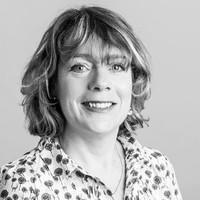ING Private Portfolio Management is the wealth management arm of ING Private Banking (ING PB) in Belgium. It is a global investor and its investment approach is long term-oriented. It uses various instruments and model portfolios, according to the client’s risk appetite, as well as tailormade portfolios. Assets under management amount to $40 bn, of which approximately $11 bn-$12 bn is managed in Belgium.
Moudy El Khodr is head of portfolio management for the south region at ING PB. He originally joined ING in 2001, working at ING Investment Management (now NN Investment Partners) in Brussels and The Hague until 2011. He rejoined the firm in 2014 after three years at Petercam, where he managed a US equity income fund, and remained there until 2018, when he took up his current position. He also worked at Banque Générale du Luxembourg in asset management between 1998 and 2001, and started his career at Euronext Brussels in 1998.
Where does ING PB fit within the investment management sector in Belgium?
We are obviously more oriented toward private clients than institutional clients. We have both a model portfolio and tailor-made portfolios. Here, there are different characteristics for each client: we can invest in bonds, equities, third-party funds and our own fund of funds. If you run a fund, your strategy is singular and clear. I used to run a US equity dividend fund, but now I have a much wider choice of investment options. Private clients have a variety of needs. It’s a challenge but it’s a nice part of being on the wealth management side.
IROs tend to be very data-driven, which can be a problem for firms like ING PB because we don’t appear in any public databases in terms of assets under management or holdings.
How should IROs think about ING PB?
That’s a very good question. We don’t have one single linear entity in the way a fund does. We get to big numbers but you don’t see public aggregation of that data. Our holdings are more sizable than you can see. In Belgium, we have €10 bn-€11 bn ($11 bn-$12 bn) in assets under management, with just under half of that held in equities.
Private banks tend to be stable shareholders. Once you are in, there is more stability than in a fund, as – unfortunately – funds increasingly tend to be driven by shorter-term metrics. We obviously have performance pressure, but it tends not to be as short term. So if a company is selected for our clients, we don’t trade around quarterly results. IROs should therefore consider us as long-term, stable holders.
Can you talk about your investment process?
Teams and colleagues collaborate and a very restricted team comes up with a model portfolio that is followed by portfolio managers or used as a source of inspiration. Because of the range of clients, however, some might want tailor-made portfolios: for example, a client might not want energy stocks as they are polluting. Within discretionary management, there is more consistency. In advisory, clients may ask our advice or direct us.
Do you buy direct holdings as opposed to mutual funds?
We don’t have direct equity mutual funds labeled ING anymore. We have a true open architecture, benefiting clients but also our fund of funds. It depends on clients’ needs. The range of clients is extremely wide in private banking. For example, if capital preservation is a key criterion for a client, we would choose something well diversified. If there is a low level of knowledge, we choose well-diversified solutions. On the other hand, if the client is financially sophisticated and knowledgeable, direct lines are more appropriate, as are derivatives or hedging strategies.
What is the asset and geographic split of assets under management?
Asset allocation decisions are made centrally by our investment office. We are currently slightly underweight equities so have less than €5 bn in direct line and equity funds. We tend to favor European and US stocks. For more exotic markets such as Latin America and Asia, we tend to use funds. For the US and Europe, we use both direct line and funds (including ETFs).
ING has other offices. Is there any collaboration?
We do collaborate in Belgium and Luxembourg and have done for many years. In other regions, we increasingly share information. Needs vary by country; some are more international, some more regional, some more risk-averse, some more growth-oriented, some prefer dividend or income thematics. So while we have our own solutions, we do share information.
Can you describe your investment style?
Personally, I am a long-established value guy: Warren Buffet, Rob Arnott and Ben Graham have been our mentors for years. Today I don’t tilt to any one style because each client has different needs.
In our model portfolio we tend to be pragmatic: the committee deciding the model portfolio is composed of four experienced portfolio managers, and we encourage diversity as an enriching factor within that team, including diversity of investment styles.
This is an extract from an article that appeared in the Summer 2020 issue of IR Magazine. To continue reading, click here to open the full digital edition of IR Magazine










